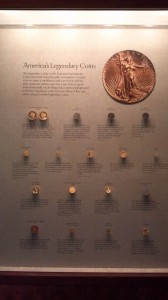Coin Market Surges after Sale of Ultimate Rarity
During the past few days the coin market has been abuzz about the sale of the 1794 silver dollar, graded PCGS/CAC SP-66, which was the first coin to exceed the $10 million dollar mark at public auction – $10,016,875 to be exact. I’ve examined this coin on several occasions and it’s spectacular! Actually, I and a partner tried to negotiate to buy this coin at the auction in order to do a trade with one of the top collectors in the country who wanted this coin, but the idea got nixed prior to the sale.
Congratulations go to Bruce Morlan and Laura Sperber of Legend Numismatics who bought the coin, to the Stacks Bowers team who cataloged and marketed the coin, and to Martin Logies and the Cardinal Educational Foundation Collection for purchasing this piece nearly three years ago in a private sale for a reported then record price of $7.85 million and for subsequently selling it at auction last week. Bruce has owned some great rarities over the years which include an 1804 silver dollar, a 1913 Liberty nickel, a great collection of Trade Dollars, including the very rare 1884 and 1885 issues; and Laura and I go back to the early 1970s when she was a regular bidder in my old-fashioned mail bid sales while I was still in high school.
While the sale of the Cardinal Collection took place in New York last week I was in Washington getting ready to meet with Karen Lee, curator of the National Numismatic Collection. This is our nation’s coin collection which began at the U.S. Mint during the early 1800s. The nation’s numismatic collection is home to numerous amazing pieces, many of which are unique. It’s a great source for research, but very few of its coins and currency are actually on display. In 2015 the Smithsonian’s National Museum of American History is undergoing a renovation, and the space devoted to the National Numismatic Collection is slated to triple.
The coins in this collection will probably never be sold, so we can call them “priceless.” But in one display alone titled, “America’s Legendary Coins,” there are 18 rarities that may be worth an astounding quarter-billion dollars if they were ever to hit the market! However there are other rare coins held in private hands that, now since the ice is broken so to speak, at the $10 million price level, buyers have been given the confidence to stretch to never before seen price levels to purchase them.
1804 Dollars and 1913 Liberty nickels may be the obvious favorites because they’re so well-known, but there are others that may be more appropriate candidates to sell for more than $10 million. For example, the pattern coin, formerly known as “J-1776,” which is the $20 gold coin with the image of that used for the $10 Indian on the obverse is one piece that is rumored to have received an offer far and above $10 million, but was turned down by its private owner. Another example is the exceedingly rare 1822 $5 gold coin of which there are just three examples known – two of them being impounded in the Smithsonian. If and when the privately owned third piece ever hits the market again it is sure to attract a world record price.
Most people may say “why bother with these ultra rarities that we can’t afford?” But they lead the way in the market for other rarities to advance in price, followed by lesser known rare coins, increasing the equity value of everybody’s collection/investments – at least of reasonably scarce and of the high end of the quality scale. So when famous coins sell for astounding money that’s not within your reach, be thankful because these sales ultimately benefit the values of the coins you own!
Inventory Categories
Recent Articles
- Are You a Rare Coin “Collector,” “Collector/Investor,” or “Investor?”
- Four Ways to Benefit by Giving your “Want List” to a Coin Dealer
- Demand is Strong for Most Areas of the Coin Market
- Now May Be a Very Good Time to Invest in Precious Metals
- Discover and Join the American Numismatic Association if you’re not already a Member





